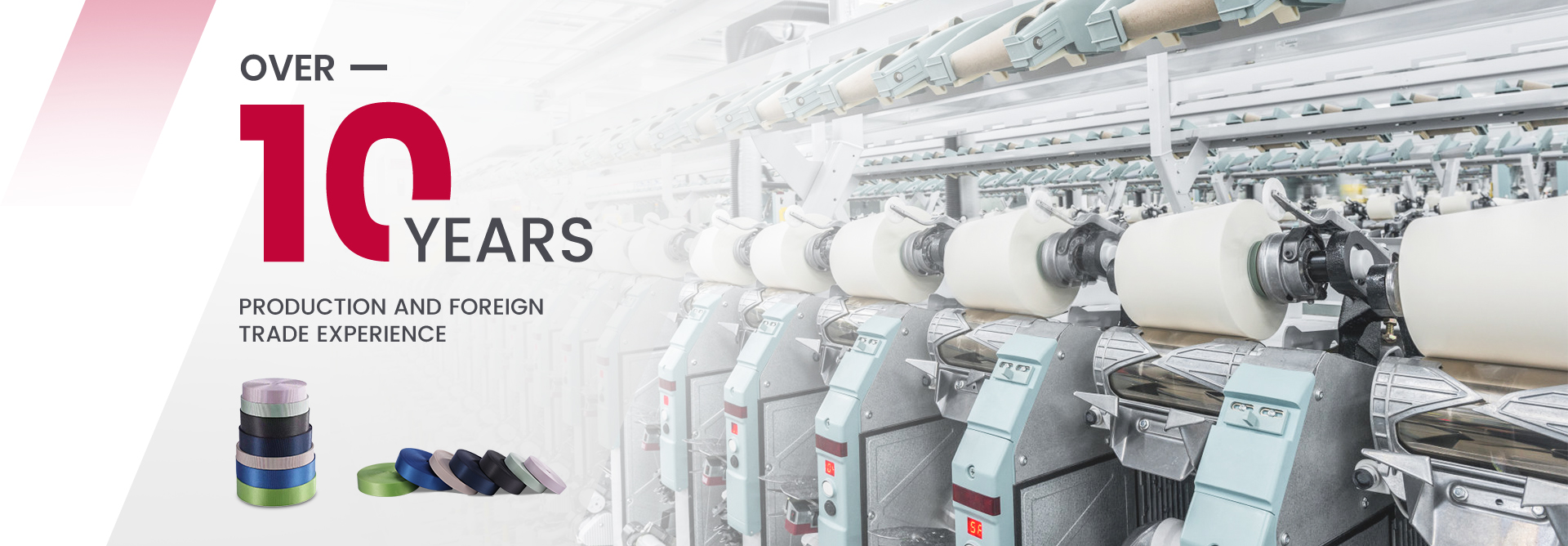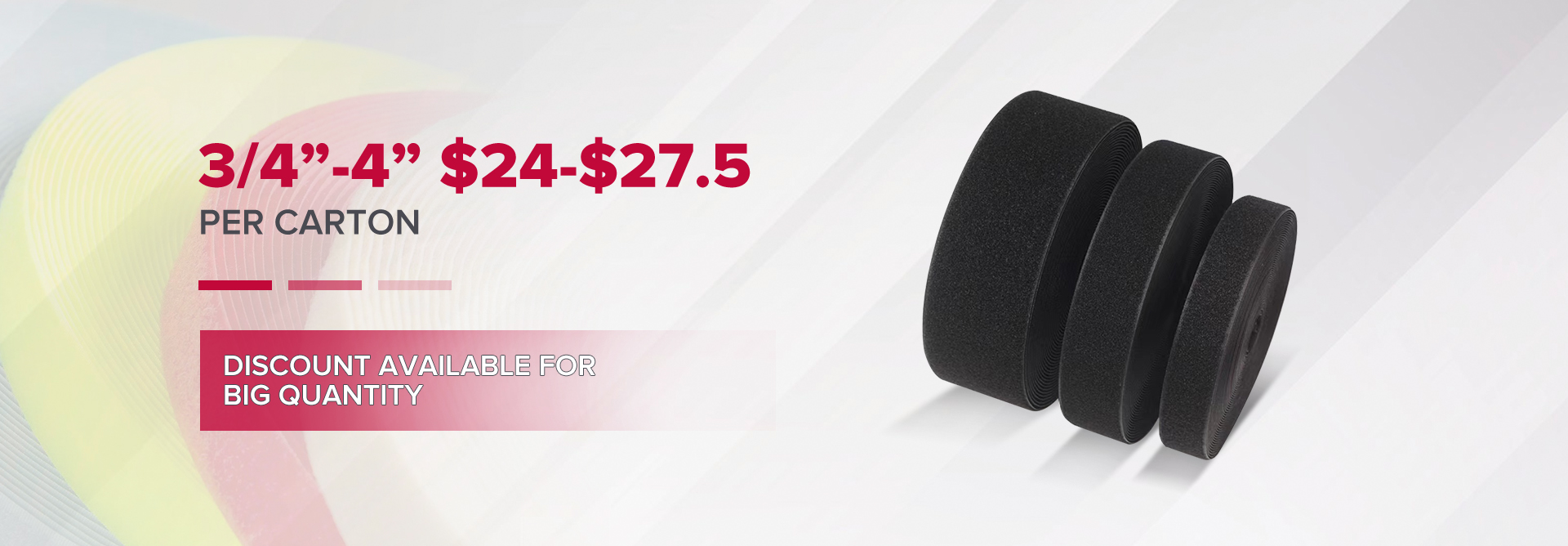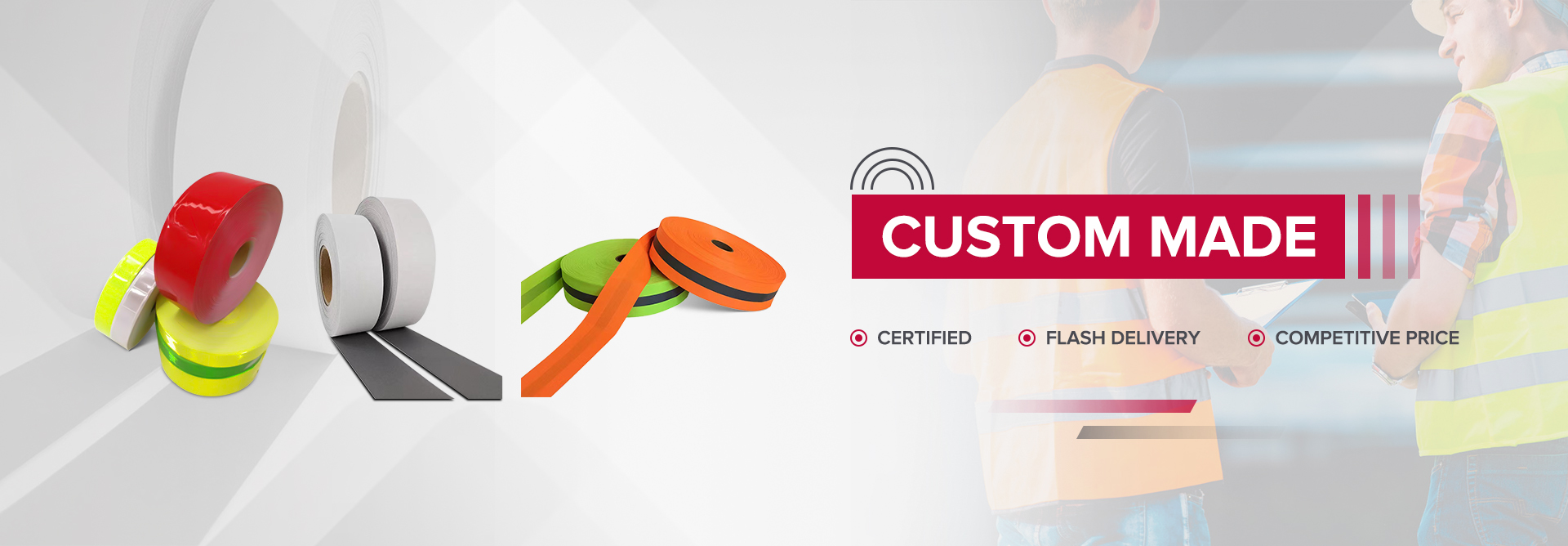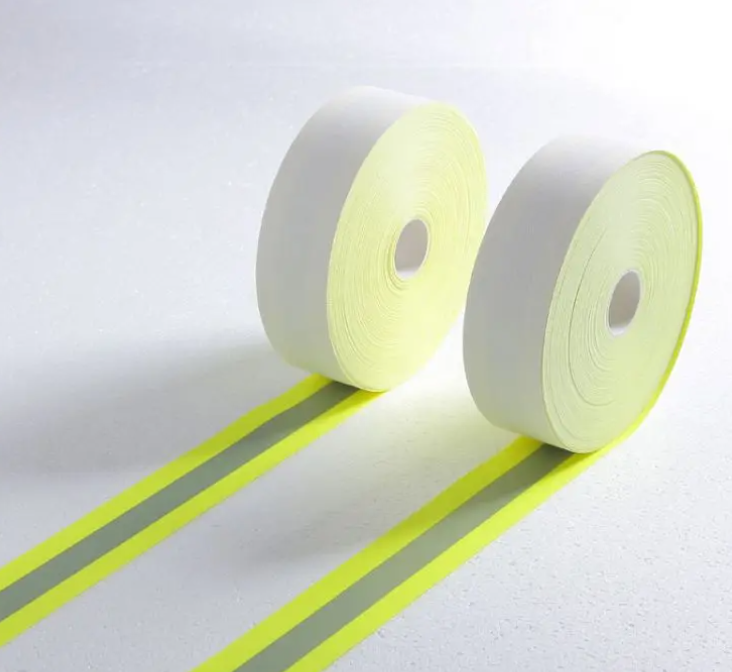Reflective tape plays a pivotal role in industrial safety by enhancing visibility and reducing accidents. Each year, 1.3 million lives are lost due to road crashes, according to WHO, emphasizing the need for effective safety measures. Studies reveal reflective tape reduces truck collisions by up to 67%, making it indispensable for high-risk environments. Products like Cotton Fluorescent Flame Retardant Reflective TX-1 meet international standards, offering reliable solutions for workplaces worldwide.
Key Takeaways
- Reflective tape helps people see better in dim light, lowering accident risks.
- Adding reflective tape to clothes, machines, and cars keeps workers safer and follows safety rules.
- Putting reflective tape on exits and paths makes them easy to find in emergencies, improving safety.
Reflective Tape for Safety Garments
High-visibility clothing
High-visibility clothing plays a vital role in industrial safety, especially in environments with low-light conditions. Reflective tape enhances the visibility of workers by reflecting light back to its source, making them noticeable to others. This feature proves essential in industries such as construction, mining, and roadwork, where poor lighting increases the risk of accidents.
The combination of fluorescent fabrics and retroreflective elements ensures workers remain visible during both daytime and nighttime operations. For example, fluorescent materials stand out in daylight, while reflective tape becomes highly effective under artificial lighting or vehicle headlights. This dual functionality significantly reduces the likelihood of collisions and injuries, creating a safer workplace. Employers often choose garments with reflective tape to comply with safety regulations and protect their workforce.
Helmets and gloves
Reflective tape on helmets and gloves provides an additional layer of safety for workers. Helmets equipped with reflective strips improve visibility from a distance, ensuring that workers are easily identifiable in crowded or hazardous zones. This feature is particularly beneficial in industries like manufacturing and warehousing, where moving machinery poses a constant threat.
Similarly, gloves with reflective tape enhance hand visibility, which is crucial during tasks requiring precise coordination or signaling. Workers operating in dimly lit areas or at night benefit greatly from this added visibility. Reflective tape on these accessories not only improves safety but also boosts communication efficiency in team-based operations.
Reflective Tape on Machinery
Moving parts
Machinery with moving parts poses significant safety risks in industrial environments. Reflective tape plays a crucial role in mitigating these hazards by enhancing visibility. Workers can easily identify rotating or oscillating components, even in low-light conditions, reducing the likelihood of accidental contact. For example, reflective tape applied to conveyor belts, robotic arms, or spinning shafts ensures that these elements remain noticeable from a distance.
Industries such as manufacturing and logistics benefit greatly from this application. Reflective tape not only improves worker awareness but also aids in compliance with safety regulations. By marking moving parts with reflective tape, employers create a safer workspace while minimizing downtime caused by accidents. This simple yet effective solution proves invaluable in environments where machinery operates continuously.
Tip: Use reflective tape with high durability and adhesive strength to ensure it withstands the wear and tear of moving components.
Stationary equipment
Stationary equipment, such as heavy machinery and storage units, also requires clear visibility to prevent workplace accidents. Reflective tape serves as a visual cue, helping workers navigate around large, immobile objects. This application is particularly useful in dimly lit warehouses, factories, and outdoor sites where poor lighting conditions prevail.
For instance, reflective tape can outline the edges of equipment like forklifts, presses, or generators. This precaution reduces the risk of collisions, especially when workers operate vehicles or carry loads in confined spaces. Additionally, reflective tape enhances emergency preparedness by marking critical equipment that may need quick access during crises. Its cost-effectiveness and ease of application make it a preferred choice for industrial safety.
Reflective Tape for Vehicle Safety
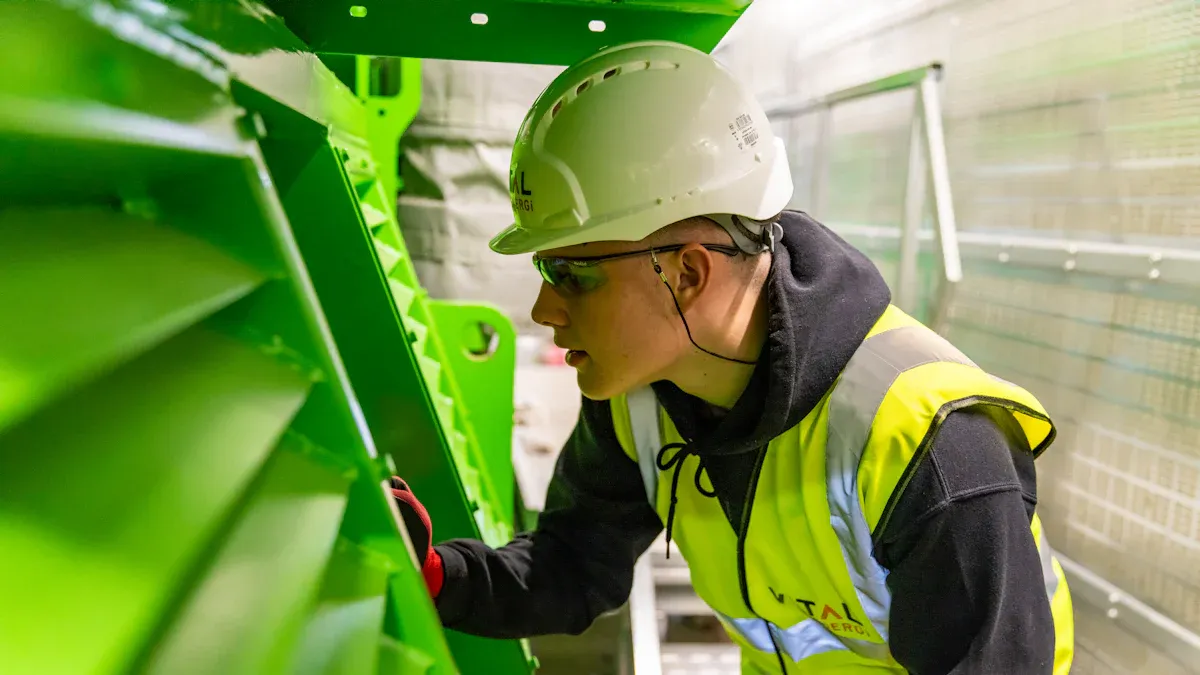
Industrial vehicles
Industrial vehicles, such as forklifts, cranes, and loaders, operate in environments with limited visibility. Reflective tape enhances their conspicuity, reducing the risk of collisions during nighttime operations or in poorly lit areas. By marking the edges and contours of these vehicles, reflective tape ensures that workers and pedestrians can identify their presence from a distance. This application proves particularly valuable in warehouses, construction sites, and manufacturing facilities where heavy machinery frequently moves.
Reflective tape also aids in compliance with safety standards, ensuring that industrial vehicles meet visibility requirements set by regulatory bodies. Its durability and resistance to wear make it suitable for vehicles exposed to harsh conditions. Employers often prioritize this safety measure to protect workers and minimize operational disruptions caused by accidents.
Trucks and trailers
Trucks and trailers face unique visibility challenges, especially under dark-not-lighted conditions. Reflective tape addresses these issues by significantly improving their visibility to other road users. The National Highway Traffic Safety Administration (NHTSA) estimates that retroreflective tape could prevent approximately 14 fatalities annually in crashes involving single-unit trucks (SUTs). This effectiveness rate, observed at 41 percent, highlights its role in reducing side and rear impacts for heavy trailers.
By applying reflective tape to the sides and rear of trucks and trailers, operators create a conspicuity system that enhances safety during nighttime travel. This precaution reduces the likelihood of collisions, particularly in areas with high traffic density. Reflective tape also supports compliance with transportation regulations, ensuring that vehicles meet safety standards. Its cost-effectiveness and ease of application make it a preferred choice for fleet operators worldwide.
Reflective Tape for Hazardous Zones
Restricted areas
Restricted areas in industrial settings often pose significant risks due to limited access and the presence of hazardous materials or equipment. Reflective tape serves as a critical safety measure by clearly marking these zones, ensuring workers and visitors can identify boundaries even in low-light conditions. This application reduces the likelihood of unauthorized entry and accidental exposure to dangerous environments.
For example, reflective tape can outline the perimeters of chemical storage areas, electrical panels, or high-voltage zones. Its high visibility ensures that these restricted spaces remain noticeable from a distance, even under dark or poorly lit conditions. Research highlights its effectiveness in reducing side and rear impacts by 29% in dark conditions and 41% in dark-not-lighted environments. Additionally, injury crashes decrease by 44% in both scenarios, underscoring the importance of reflective tape in enhancing safety.
| Condition | Reduction in Side/Rear Impacts | Reduction in Injury Crashes |
|---|---|---|
| Dark Conditions | 29% | 44% |
| Dark-Not-Lighted | 41% | 44% |
By incorporating reflective tape into restricted zones, industries can create a safer environment while adhering to safety regulations.
Edges of platforms
The edges of platforms, especially in elevated or multi-level workspaces, present a high risk of falls and accidents. Reflective tape provides a simple yet effective solution by marking these edges, making them highly visible to workers. This precaution proves invaluable in environments like construction sites, warehouses, and manufacturing facilities, where poor lighting or cluttered spaces can obscure platform boundaries.
Reflective tape enhances visibility during nighttime operations or in dimly lit areas, reducing the risk of missteps or falls. Workers operating heavy machinery or carrying loads benefit from this added safety measure, as it helps them navigate platforms more confidently. Additionally, reflective tape can be used to mark temporary platforms or scaffolding, ensuring compliance with safety standards while minimizing workplace hazards.
By applying reflective tape to platform edges, employers can significantly reduce accidents and create a safer workspace for their teams.
Reflective Tape for Emergency Exits
Exit doors
Emergency exit doors play a critical role in ensuring the safety of workers during crises. Reflective tape enhances the visibility of these doors, making them easy to locate even in low-light or smoke-filled conditions. By outlining the edges of exit doors with reflective tape, industries can ensure that workers can quickly identify escape routes during emergencies. This application proves particularly valuable in factories, warehouses, and construction sites where lighting may fail during power outages or fires.
Reflective tape also helps organizations comply with safety regulations that mandate clear marking of emergency exits. Its durability and resistance to wear ensure long-lasting performance, even in high-traffic areas. Employers often choose reflective tape as a cost-effective solution to improve workplace safety and minimize evacuation delays.
Tip: Use reflective tape with high-intensity reflectivity for maximum visibility in dark or smoky environments.
Pathways during emergencies
Emergency pathways must remain clearly visible to guide workers to safety. Reflective tape provides an effective way to mark these routes, ensuring that individuals can navigate them quickly and efficiently. By applying reflective tape along the edges of floors, walls, or handrails, industries can create a clear visual guide that stands out in dimly lit or chaotic situations.
This application is especially beneficial in large facilities where workers may need to traverse long distances to reach safety. Reflective tape ensures that pathways remain noticeable even when visibility is compromised by smoke, debris, or poor lighting. Its ease of application and maintenance makes it a preferred choice for enhancing emergency preparedness.
Employers who prioritize safety often integrate reflective tape into their emergency planning strategies. This simple yet effective measure significantly reduces evacuation times and improves overall safety outcomes during critical situations.
Reflective Tape for Staircases and Walkways
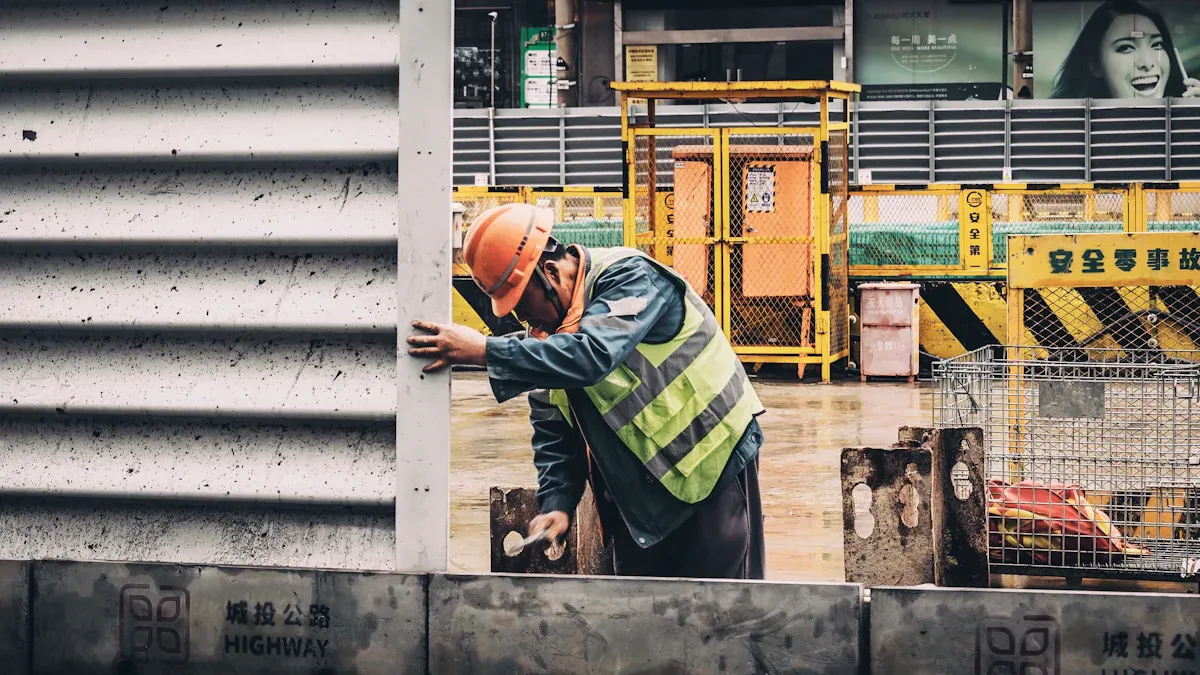
Steps and edges
Staircases often present safety challenges, especially in industrial environments where lighting conditions may vary. Reflective tape offers a practical solution by marking steps and edges, making them more visible to workers and visitors. This enhanced visibility reduces the risk of trips and falls, particularly in areas with heavy foot traffic or uneven surfaces.
Reflective tape applied to the edges of steps acts as a visual guide, helping individuals navigate staircases safely. It proves especially effective in emergency situations when quick evacuation is necessary. Facilities that prioritize safety often include reflective tape in their walkway safety checklists to identify and mitigate potential hazards. This proactive approach minimizes accidents and ensures compliance with safety standards.
- Reflective tape enhances visibility in poorly lit areas.
- It helps guide pedestrians safely, reducing the risk of trips and falls.
By incorporating reflective tape into staircase designs, industries create safer environments for their workforce and visitors.
Dimly lit walkways
Dimly lit walkways pose significant risks in industrial settings, as poor visibility can lead to accidents. Reflective tape provides a cost-effective way to improve safety by marking pathways and highlighting potential hazards. Its high reflectivity ensures that walkways remain visible even in low-light conditions, guiding workers and visitors safely through the area.
Facilities often use reflective tape to outline the edges of walkways or mark obstacles such as uneven surfaces or protruding objects. This precaution not only reduces the likelihood of injuries but also enhances overall workplace efficiency by minimizing disruptions caused by accidents. Regular safety audits assess the effectiveness of these measures, ensuring that walkways remain hazard-free.
Employers who invest in reflective tape for walkways demonstrate a commitment to safety, creating a more secure environment for everyone on-site.
Reflective Tape for Warehouse Safety
Aisle markings
Warehouses often feature complex layouts with narrow aisles, making clear navigation essential for safety and efficiency. Reflective tape provides a practical solution by marking aisle boundaries and pathways. This visual aid helps workers and equipment operators identify designated routes, reducing the risk of collisions and accidents.
In high-traffic areas, reflective tape enhances visibility, especially in dimly lit or crowded spaces. Forklift operators, for instance, can quickly recognize marked pathways, ensuring smoother operations. Additionally, reflective tape can be color-coded to indicate specific zones, such as pedestrian walkways or equipment-only areas. This system improves organization and minimizes confusion in busy environments.
Tip: Regularly inspect aisle markings to ensure the reflective tape remains intact and visible, as wear and tear can reduce its effectiveness.
Storage zones
Storage zones in warehouses often house heavy or hazardous materials, requiring clear demarcation to prevent accidents. Reflective tape serves as an effective tool for marking these areas, ensuring workers can easily identify storage boundaries. This precaution reduces the likelihood of misplaced items and accidental damage to goods.
Reflective tape also plays a critical role in emergency preparedness. By marking storage zones, workers can quickly locate essential supplies or equipment during crises. For example, reflective tape can highlight fire extinguisher stations or emergency supply cabinets, ensuring they remain visible even in low-light conditions.
Warehouses that implement reflective tape in storage zones not only enhance safety but also improve operational efficiency. Workers spend less time navigating the facility, allowing them to focus on their tasks with greater accuracy and speed.
Reflective Tape for Construction Zones
Barriers and cones
Barriers and cones serve as essential safety tools in construction zones, guiding traffic and protecting workers. Applying reflective tape to these items significantly enhances their visibility, especially during nighttime operations or in low-light conditions. Drivers and pedestrians can easily identify marked barriers and cones from a distance, reducing the risk of accidents.
Reflective tape also helps differentiate specific zones within construction sites. For instance, color-coded reflective tape can indicate areas restricted to workers or highlight detours for vehicles. This application ensures smooth navigation and minimizes confusion in high-traffic areas. Construction managers often prioritize reflective tape for barriers and cones to comply with safety regulations and maintain an organized work environment.
Tip: Use weather-resistant reflective tape to ensure durability in outdoor construction zones.
Temporary structures
Temporary structures, such as scaffolding, tents, and portable offices, are common in construction zones. These structures often pose safety risks due to their temporary nature and placement in high-activity areas. Reflective tape provides a practical solution by marking the edges and entry points of these structures, making them more visible to workers and visitors.
This application proves particularly valuable during nighttime operations or in adverse weather conditions. Workers can quickly identify temporary structures, reducing the likelihood of collisions or missteps. Reflective tape also enhances emergency preparedness by clearly marking exits and pathways within these structures. Its ease of application and cost-effectiveness make it an indispensable safety measure for construction sites.
By incorporating reflective tape into barriers, cones, and temporary structures, construction zones become safer and more efficient environments for workers and the public.
Reflective Tape on PPE
Vests and harnesses
Personal protective equipment (PPE) such as vests and harnesses plays a critical role in safeguarding workers in industrial environments. Reflective tape enhances the functionality of these items by significantly improving their visibility. Workers wearing vests with reflective elements are easier to spot, even in low-light or high-risk conditions. This feature proves essential in industries like construction, logistics, and road maintenance, where worker safety depends on being seen by others.
Harnesses equipped with reflective tape provide an added layer of protection for those working at heights. The reflective material ensures that workers remain visible to their colleagues and supervisors, reducing the risk of accidents during nighttime operations or in poorly lit areas. Employers often choose reflective-enhanced PPE to comply with safety regulations and demonstrate a commitment to worker well-being.
Note: Regular inspections of reflective tape on PPE ensure its effectiveness and longevity, especially in harsh working conditions.
Worker visibility
Worker visibility is a cornerstone of industrial safety. Reflective tape on PPE ensures that workers remain noticeable in environments where visibility is compromised. This application is particularly valuable in scenarios involving heavy machinery, moving vehicles, or dimly lit workspaces. By reflecting light back to its source, the tape creates a bright, attention-grabbing effect that alerts others to a worker’s presence.
Industries operating during nighttime or adverse weather conditions benefit greatly from this safety measure. Reflective tape not only reduces the likelihood of accidents but also fosters a culture of safety awareness. Employers who prioritize visibility measures often experience fewer workplace incidents, leading to improved productivity and morale.
Tip: Choose reflective tape with high-intensity reflectivity for maximum effectiveness in challenging environments.
Reflective Tape for Outdoor Sites
Nighttime operations
Outdoor sites often operate during nighttime, especially in industries like construction, logistics, and mining. Reflective tape enhances safety by improving visibility in these low-light conditions. Workers can easily identify marked areas, equipment, and vehicles, reducing the risk of accidents. For example, reflective tape applied to barriers, machinery, or safety gear ensures that critical elements remain noticeable even from a distance.
Reflective tape also aids in guiding vehicles and pedestrians through complex outdoor layouts. By marking pathways and hazards, it creates a clear visual reference that minimizes confusion. This application proves particularly valuable in remote locations where artificial lighting may be limited. Industries that prioritize nighttime safety often rely on reflective tape as a cost-effective solution to improve operational efficiency and protect their workforce.
Tip: Use reflective tape with high-intensity reflectivity to maximize visibility during nighttime operations.
Foggy or rainy conditions
Foggy or rainy conditions significantly impair visibility, increasing the likelihood of accidents in outdoor sites. Reflective tape provides an effective solution by reflecting light back to its source, making marked objects and areas more visible. Workers can quickly identify hazards, boundaries, and equipment, even in adverse weather.
For instance, reflective tape applied to scaffolding, vehicles, or temporary structures ensures that these elements remain noticeable despite reduced visibility. This precaution enhances safety for both workers and visitors navigating the site. Industries operating in regions prone to fog or heavy rainfall often integrate reflective tape into their safety protocols to mitigate risks and maintain productivity.
Reflective tape also supports compliance with safety regulations, ensuring that outdoor sites meet visibility standards. Its durability and resistance to weather conditions make it a reliable choice for challenging environments.
Reflective tape remains a cornerstone of industrial safety, offering enhanced visibility and accident prevention across diverse applications. Its benefits include improved safety, increased productivity, and cost-effectiveness, as shown below:
| Benefit | Description |
|---|---|
| Improved Safety | Enhances visibility, reducing the risk of accidents and injuries. |
| Increased Productivity | Clear markings improve navigation, leading to more efficient movement in the warehouse. |
| Cost-Effective Solution | Reflective tape is easy to apply and requires minimal maintenance, making it a budget-friendly option. |
| Customizable | Available in various colors and patterns to meet specific needs. |
| Easy Installation | Simple application process that does not disrupt daily operations. |
Industries adopting reflective tape not only protect their workforce but also optimize operations, making it an indispensable safety tool.
FAQ
What are the key benefits of using reflective tape in industrial settings?
Reflective tape enhances visibility, reduces accidents, and ensures compliance with safety regulations. Its durability and cost-effectiveness make it an essential safety tool for various industries.
How often should reflective tape be inspected or replaced?
Inspect reflective tape quarterly for wear or damage. Replace it immediately if its reflectivity diminishes or adhesive strength weakens to maintain safety standards.
Can reflective tape be customized for specific industrial needs?
Yes, reflective tape comes in various colors, patterns, and sizes. Industries can customize it to meet specific safety requirements, such as marking hazardous zones or equipment.
Post time: May-19-2025

